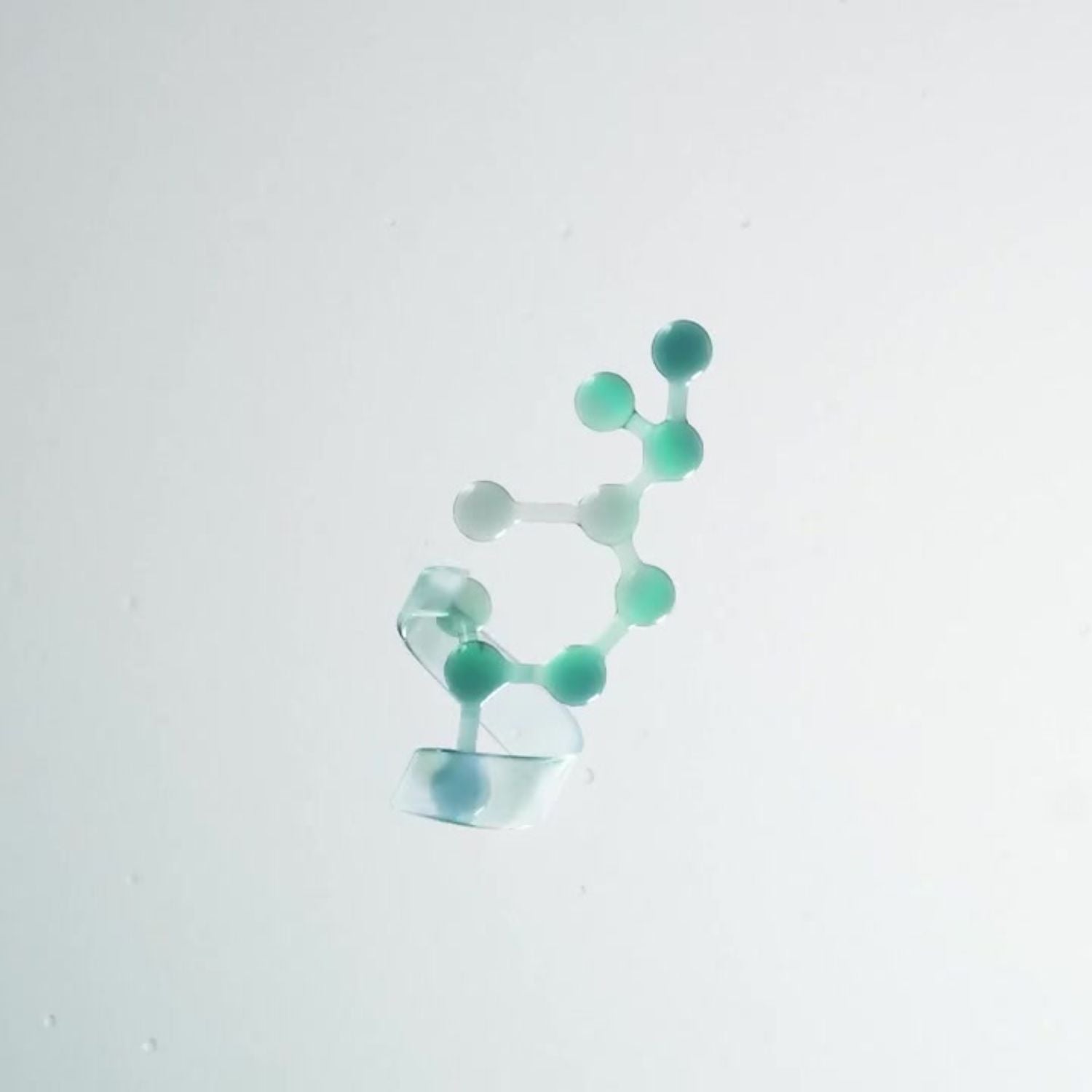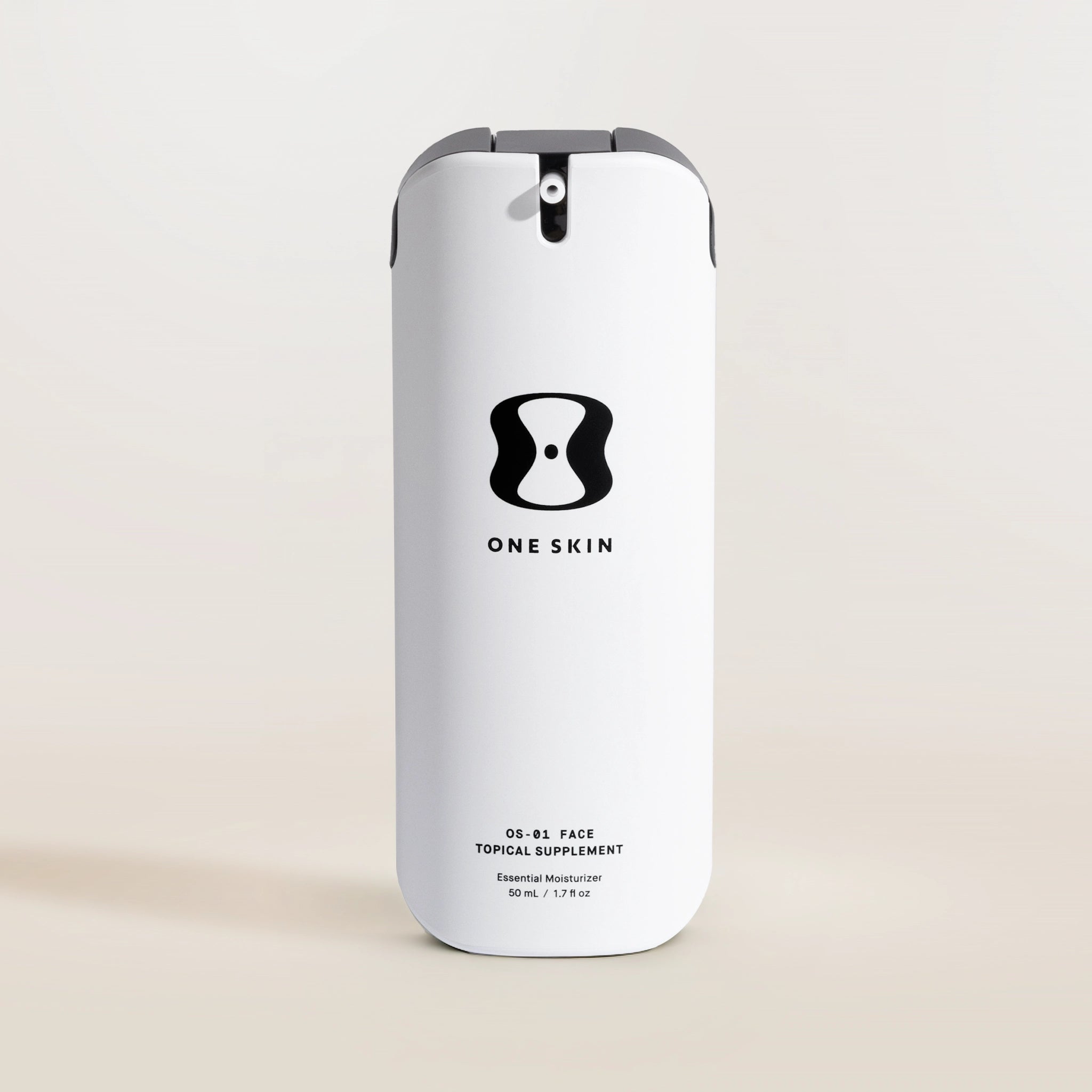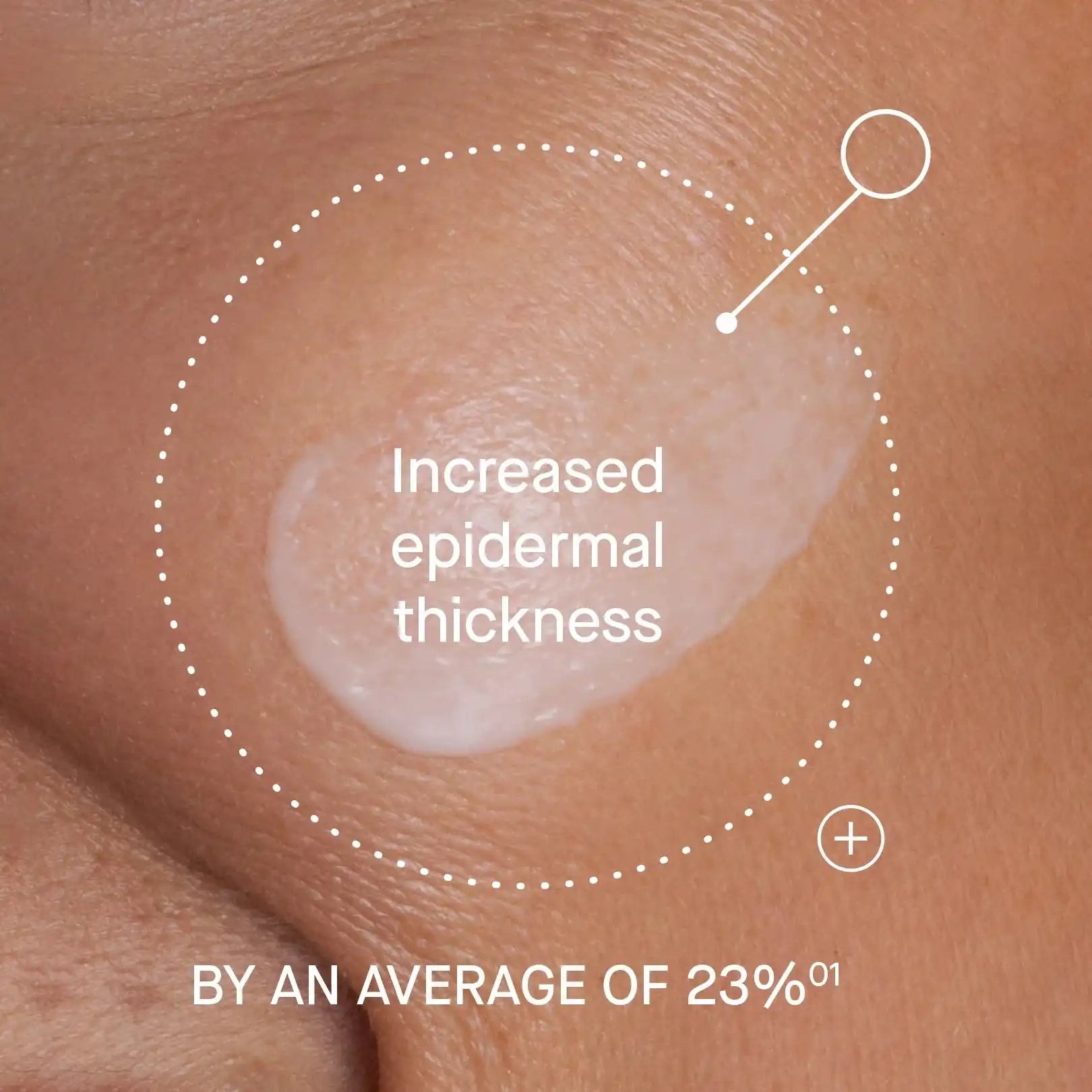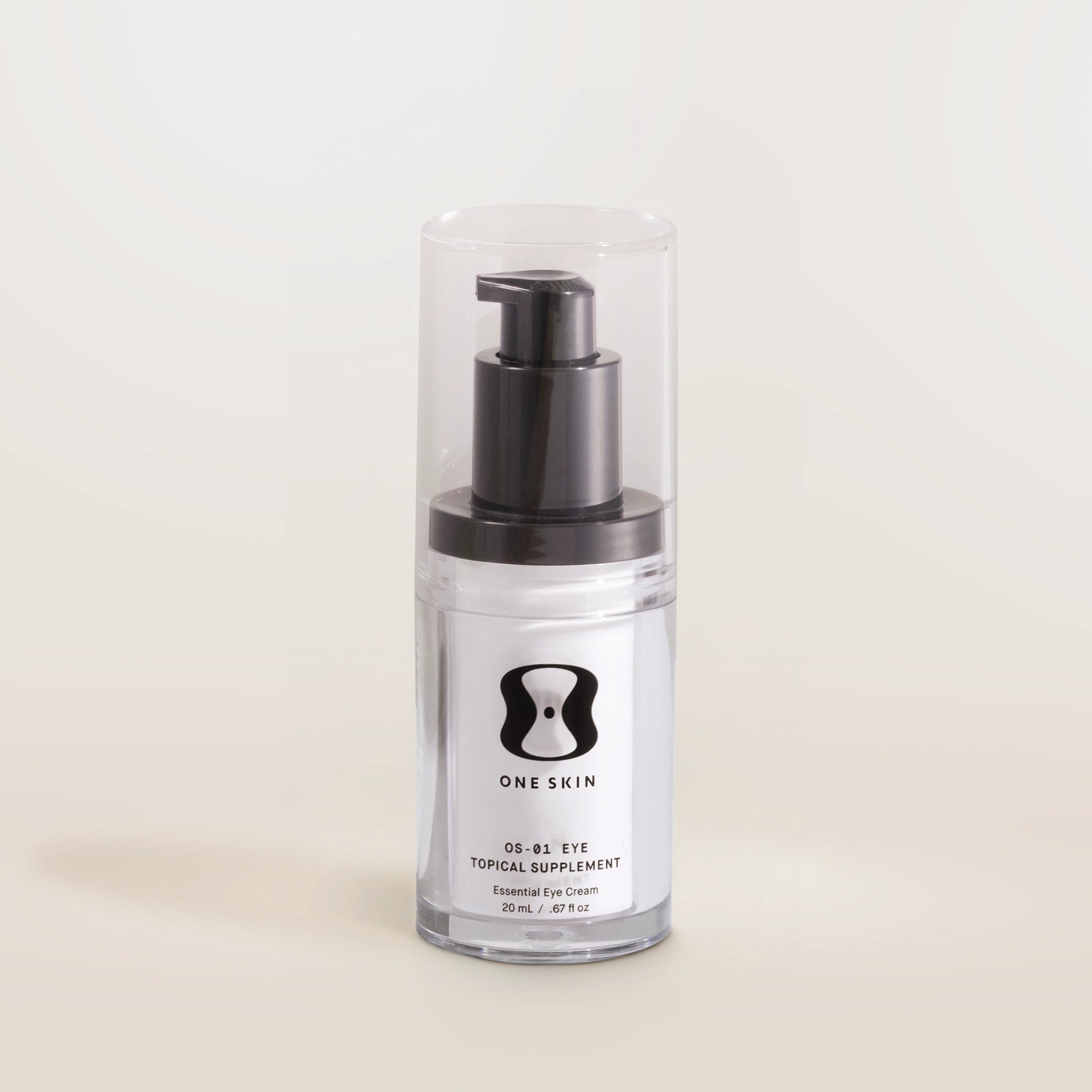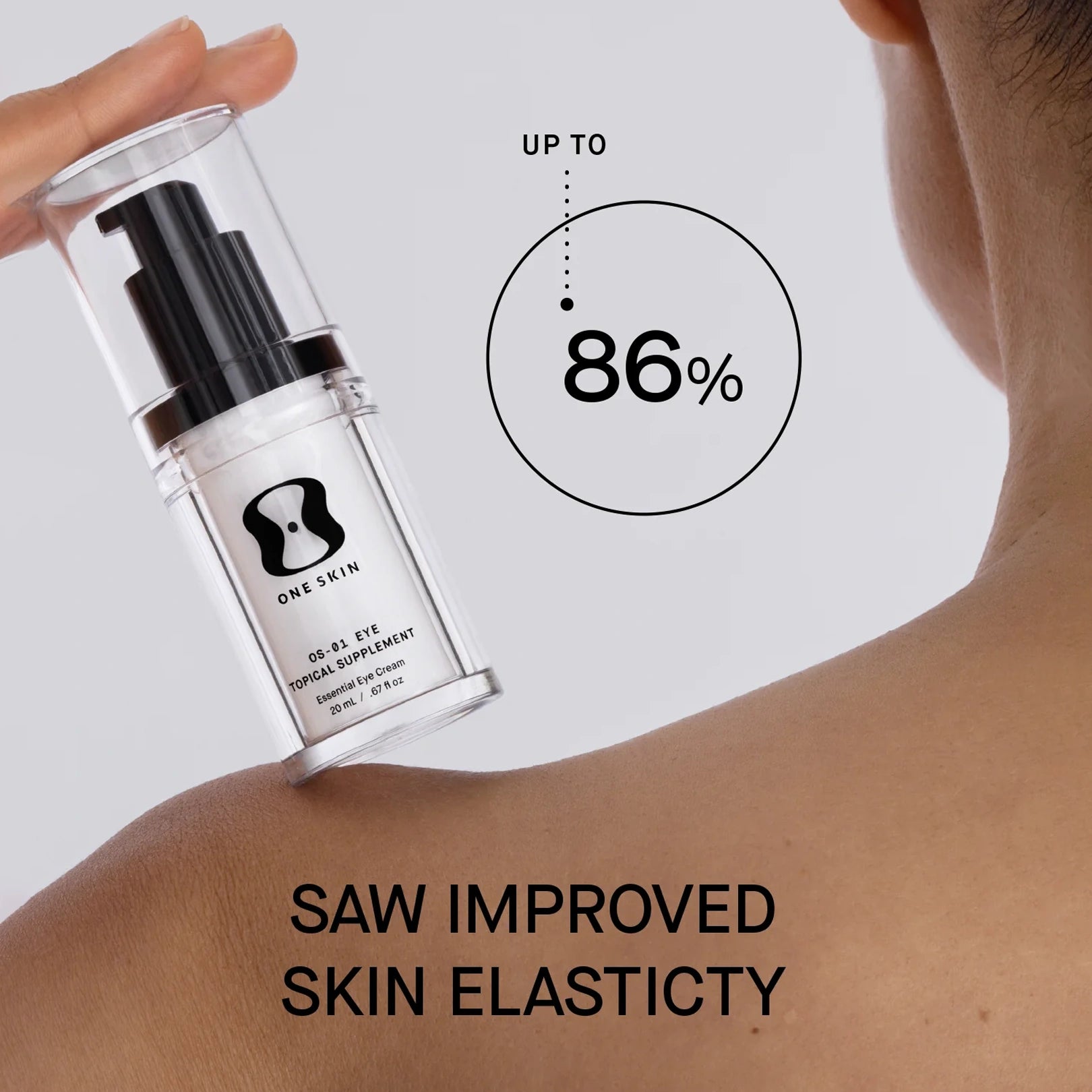A good night's sleep can leave you feeling refreshed, alert, and ready to take on the next day. The same is true for your skin. While you sleep, the body shifts into recovery mode, clearing oxidative stress, repairing DNA, and rebuilding proteins damaged by sun, pollution, and daily wear.[1]
This makes sleep, and the quality, timing, and consistency of that sleep, essential factors in the appearance, health, and longevity of your skin.
Why is Sleep Critical for Skin Functions?
The skin is governed by its own circadian clocks, 24-hour biological rhythms that coordinate cellular activities. Many skin functions oscillate with a daily rhythm. For example, skin cell proliferation, DNA repair, and growth hormone activity are known to peak while you sleep, and barrier permeability and blood flow fluctuate between day and night.[1]
Sleep is tightly intertwined with these peripheral rhythms. However, disrupting sleep can desynchronize the skin’s clock. Whether it's sleep deprivation, an irregular sleep schedule, or just poor quality sleep, disrupted circadian coordination can impair the skin’s ability to conduct proper repair.
Hydration, Barrier Function, and Skin Permeability
Even minimal sleep loss is associated with drier skin and impaired barrier integrity. For example, a clinical study on the effects of sleep restriction limited participants to only 3 hours of sleep per night for 2 nights, and measured their skin parameters before and after sleep restriction. These participants showed significantly lower skin hydration and higher transepidermal water loss (TEWL), indicating a weakened skin barrier.[2]
Unsurprisingly, chronically poor sleepers have compromised barrier function as well. A study of middle-aged women compared “good” sleepers to “poor” sleepers. The poor sleepers had higher baseline TEWL and slower barrier recovery after a standardized skin stressor.[3] 72 hours after damage, good sleepers had +30% greater barrier recovery than poor sleepers—this means their skin repaired itself faster, regaining moisture retention more effectively. Conversely, lack of sleep leaves the barrier disrupted, leading to dryness, irritation, and slower healing of the protective layer.[3]
Beyond barrier integrity, sleep also influences skin permeability, or the ease with which substances penetrate the outer layer. Research shows that permeability is naturally higher overnight than in the daytime, peaking around 4:00 AM, which may help explain why eczema symptoms often flare up at night.[1] Both hydrophilic and lipophilic compounds absorb more effectively during this window, improving the potency of moisturizers, repair creams, or even topical medications such as steroids.[1] In other words, the restorative processes of sleep not only strengthen the barrier but also optimize the timing for skincare to penetrate and work more effectively.
Elasticity and Firmness
Sleep can have significant impacts on the visible signs of skin aging, like wrinkles and fine lines. Research finds that the biomechanical properties of skin worsen with lack of sleep.[2] But the amount of sleep isn't everything. In a recent study, those who went to bed late had measurably lower skin firmness and elasticity with significantly more pronounced wrinkles on average compared to those with earlier bedtimes.[4]
One factor that may contribute to this observation is that levels of growth hormones, molecules that stimulate protein production, peak during the first phase of slow-wave sleep.[5] When the timing of this sleep is disrupted, it can inhibit the skin's natural repair process and prevent a full recovery of proteins key to skin elasticity and firmness, like collagen and elastin.[6]
Sebum Production
Sleep habits may also influence the skin's production of oils called sebum. Sebum production is lowest at around 4:00 AM and highest at midday, meaning the skin’s oiliness changes dramatically over the course of the day. But some sleep patterns can disrupt this process, as late sleepers can have significantly higher sebum levels on facial skin, which may contribute to acne and oiliness.[4]
Skin Microbiome
Late sleepers exhibit reduced microbial diversity and a decreased population of beneficial bacteria.[4] While the full implications of this are still being researched, a diverse and balanced microbiome is generally considered important for skin health and immunity.[7] Maintaining healthy sleep habits appears to support a balanced skin environment, where chronic sleep disturbances could disrupt skin microbiome homeostasis.[4]
Wound Healing and Tissue Repair
One of the clearest demonstrations of sleep’s importance to skin is its effect on wound healing. Multiple studies have found that sleep deprivation slows the healing of wounds, whereas healthy sleep can enhance recovery.
In a controlled trial, researchers created small standardized skin injuries on healthy volunteers under 2 conditions: when they were well-rested and after they underwent 72 hours of severe sleep restriction. The results were unsurprising: wounds healed significantly faster in the well-rested population. By measuring the return of barrier function over the wound, they found well-rested participants healed in 4.2 days versus 5.0 days for those with sleep restriction. In other words, even a few nights of poor sleep can delay wound closure by nearly 20%.[8]
While wound healing and tissue repair depend on many factors, poor sleep can hinder the activity of keratinocytes—cells that maintain the skin barrier.[1] When these cells are impaired, the skin’s natural repair processes can slow down.
How to Maximize Skin Repair While You Sleep
Clearly, nighttime is a vital window for skin repair. So how can you leverage your beauty sleep to get the most skin benefits? Here are some science-backed strategies to optimize your skin’s overnight recovery:
- Prioritize Sufficient, Quality Sleep: For your skin to thrive, shoot for 7–9 hours of restful sleep every night. Try keeping a steady routine with the same bedtime and same wake-up time to support your skin’s natural rhythm. That consistency gives your body the window it needs to repair DNA and build collagen while you sleep.[1,9]
- Create a Skin-Friendly Sleep Environment: Set up your bedroom for success: dark, cool, and comfortable. Darkness encourages melatonin production, the hormone that helps you sleep deeply.[10] A slightly cool room with breathable bedding prevents overheating and transepidermal water loss. And if the air is dry, which is common in winter or desert climates, a humidifier can help maintain skin hydration overnight.
- Avoid Sleep Disruptors (for Your Skin and Sleep Quality): Late-night habits like caffeine, alcohol, or screen time can disrupt the deep, restorative sleep your skin needs. Alcohol can also dehydrate your body and skin, while caffeine and blue light from screens can disrupt your body's natural circadian rhythm. Prioritize habits that help your body naturally wind down, like dimming the lights or avoiding screen time before you sleep.[11]
- Sleep on a Clean, Gentle Surface: Believe it or not, your pillowcase can affect the health of your skin. Keeping pillowcases clean prevents bacteria from building up, and softer fabrics may help cut down on friction and irritation.
- Follow a Nighttime Repair Focused Skincare Routine: Cleanse dirt and grease accumulated during your day, then apply a moisturizer to prevent the overnight moisture loss that can leave skin dull and dehydrated. Night is also the perfect opportunity to use powerhouse treatments like retinoids or peptides, which work best while your skin is in full repair mode. With skin permeability and circulation naturally increasing at night, your products can work harder for you as you rest.[1]
By incorporating these practices, you create optimal conditions for your skin to restore itself overnight. Think of your nighttime routine as setting the stage for skin recovery: you supply hydration, nourishment, and a good environment, and your skin’s cells do the heavy lifting of regeneration.
Add New OS-01 LIP to Your Overnight Routine
Skin does its best repair work at night—and your lips are no exception. Thinner, unprotected, and quick to show signs of aging, they benefit most from targeted overnight support. New OS-01 LIP Mask is formulated to align with this natural repair cycle, promoting collagen, elastin, and hyaluronic acid production while you sleep.
Over time, lips become fuller, smoother, and stay deeply hydrated. Learn more about OS-01 LIP Mask and how to make it part of your nightly ritual.[12]

Key Takeaways
- Your skin does its heaviest repair work at night, clearing damage, fixing DNA, and rebuilding proteins.
- The skin runs on 24-hour rhythms, and poor or irregular sleep desynchronizes those clocks and impairs recovery.
- Sleep loss leads to lower hydration, decreased repair, increased sebum production, and a weaker skin microbiome.
- Increased permeability and blood flow during sleep mean your night creams and actives work harder.
- The easiest skin interventions are sleep hygiene, a consistent bedtime, cool and dark sleep conditions, a clean pillowcase, and a targeted night routine.
References
- https://pmc.ncbi.nlm.nih.gov/articles/PMC6777699/
- https://pubmed.ncbi.nlm.nih.gov/34971928/
- https://pubmed.ncbi.nlm.nih.gov/25266053/
- https://pubmed.ncbi.nlm.nih.gov/35698548/
- https://pubmed.ncbi.nlm.nih.gov/8627466/
- https://academic.oup.com/edrv/article-abstract/24/6/737/2567213redirectedFrom=fulltext
- https://pmc.ncbi.nlm.nih.gov/articles/PMC7998121/
- https://pubmed.ncbi.nlm.nih.gov/28912361/
- https://pmc.ncbi.nlm.nih.gov/articles/PMC4434546/
- https://pmc.ncbi.nlm.nih.gov/articles/PMC4334454/
- https://pubmed.ncbi.nlm.nih.gov/36841492/
- Based on data from clinical studies and/or lab studies conducted on human skin samples, 3D skin models, and skin or hair cells in the OneSkin lab. Explore more at oneskin.co/claims
